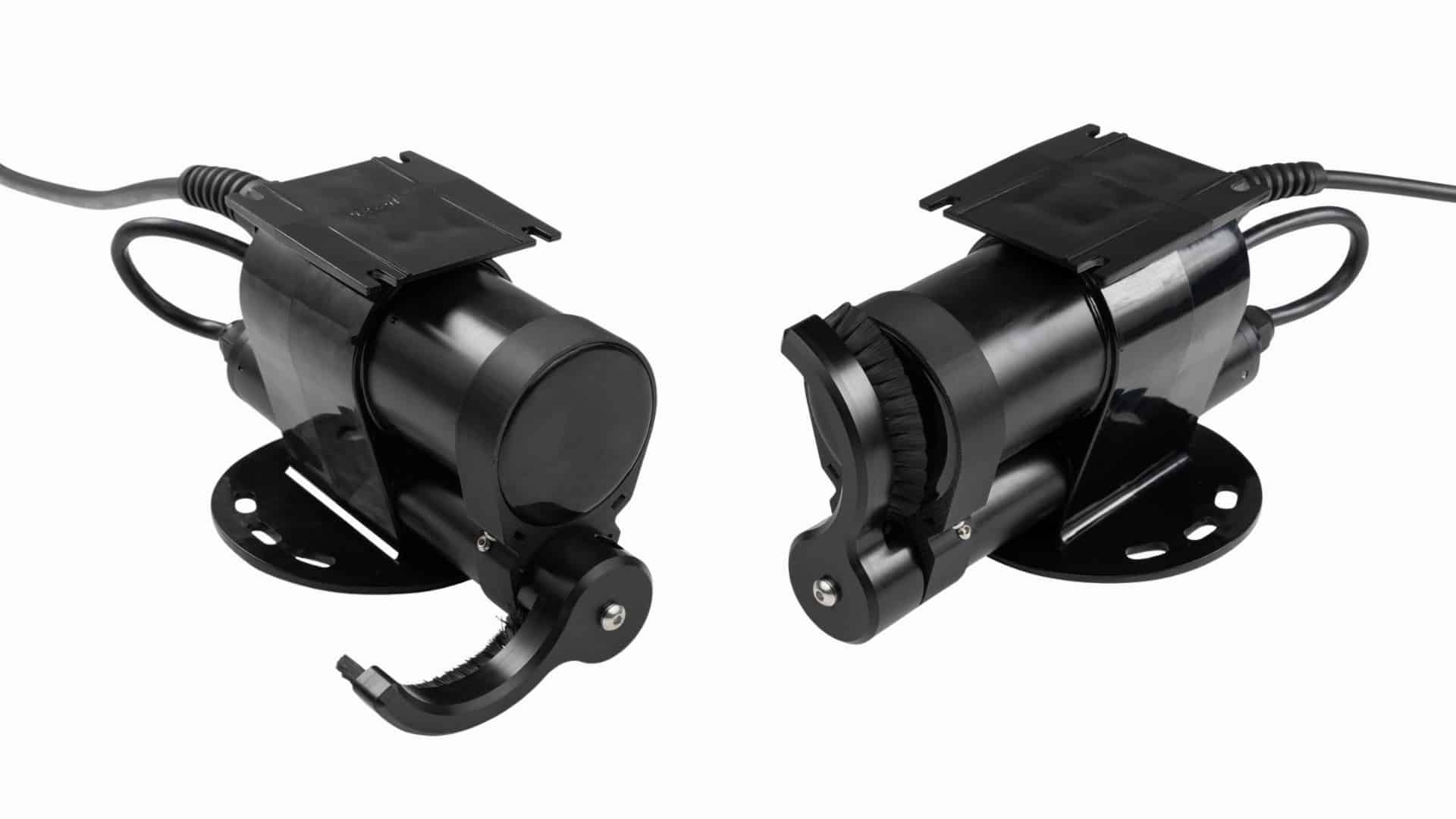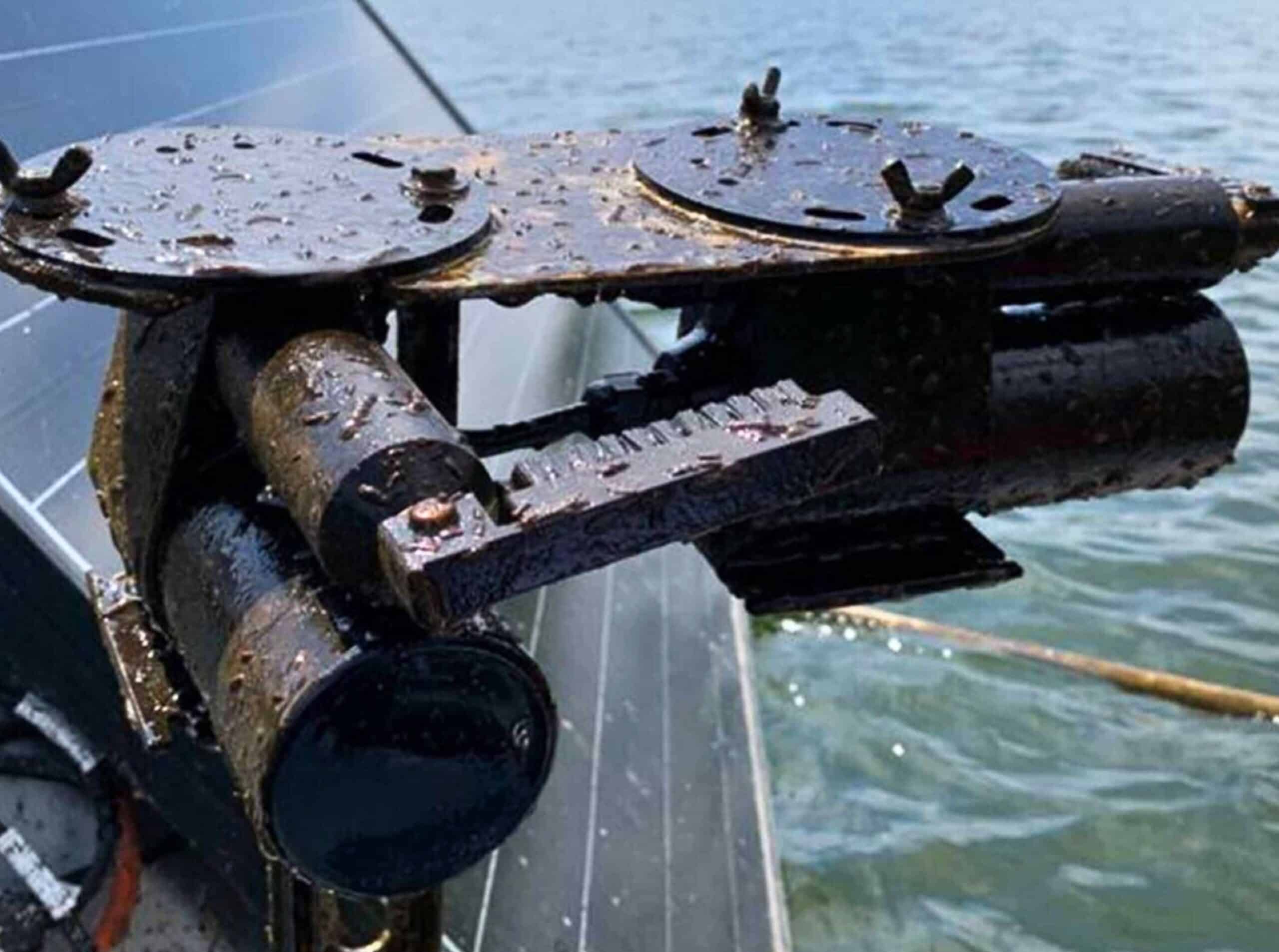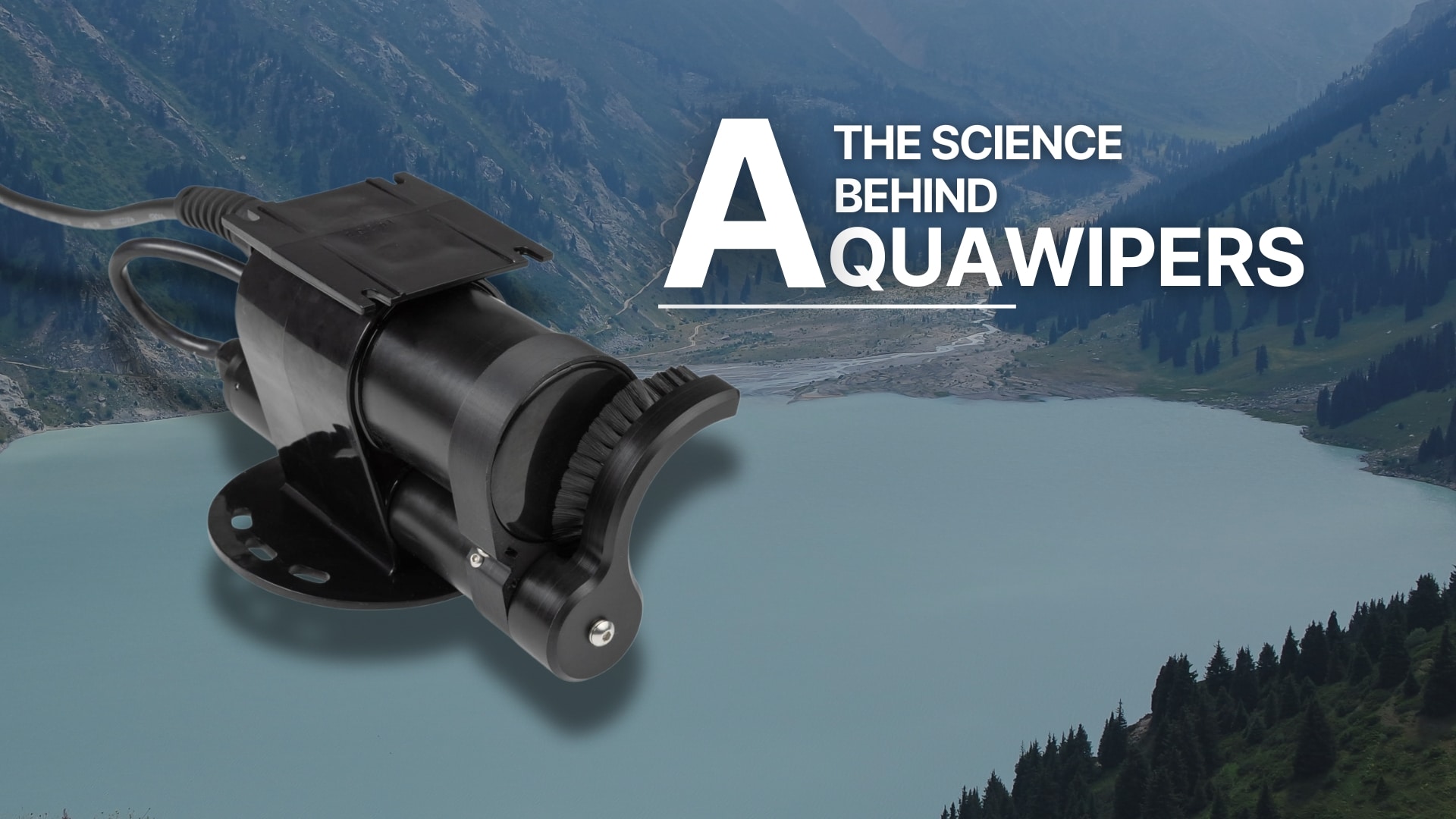When it comes to controlling algae growth in lakes, reservoirs, and large water bodies, the MPC-Buoy technology is a trusted solution worldwide. But what truly sets the MPC-Buoy algae solution systems apart is its AquaWiper, a self-cleaning system designed to maintain the effectiveness of our ultrasound transmitters and water quality sensors. Biofouling, barnacle growth, and other organic material significantly reduce the efficiency of ultrasonic technology, forcing many systems to require frequent manual cleaning. AquaWiper and its automatic wipers reduce the problem of biofouling and heavy-duty maintenance.
The Science Behind AquaWipers
-
- Why Clean Transmitters Matter
Each MPC-Buoy features four ultrasound transmitters that emit precise frequencies to control algae. Over time, these transmitters accumulate biofilm, calcite deposits, barnacles, and weeds, which heavily reduce ultrasound efficiency. Studies show that within four weeks, if not cleaned, transmitters lose up to 50% of their performance. This leads to weaker algae control. The AquaWiper system eliminates this issue by automatically wiping the transmitter face once every hour. This is also customizable according to the water quality needs. This ensures they remain clean and fully operational. Regularly cleaning transmitters maintains the strength of ultrasound waves and maximizes their effectiveness in algae control. Biofilm and barnacle buildup significantly weaken the ultrasonic signal. This reduces the transmitters ability to disrupt algae growth. Without a cleaning system, algae control loses effectiveness rapidly, requiring constant manual intervention. AquaWiper automates this process, guaranteeing uninterrupted and efficient algae control.
- Why Clean Transmitters Matter

Left: Shows the motion of the wiper; Right: Shows interaction with the face of the transmitter.
- Why Clean Sensors Matter?
The Buoy systems rely on advanced sensors to measure key parameters such as chlorophyll-a, pH, dissolved oxygen, and turbidity. These sensors provide real-time data that allows water managers to make informed decisions about treatment strategies. However, without proper maintenance, sensor accuracy can degrade significantly over time. If sensors are not kept clean, deposits from organic matter, algae and microorganisms can obstruct the sensors ability to take accurate measurements. This can lead to incorrect water quality readings. Inversely, make the algae control ineffective. In extreme cases, inaccurate sensor readings may even indicate that water is safe when it is not, posting serious health risks for aquatic ecosystems and drinking water supplies.
The Challenge of Manual Cleaning
Most algae control systems available in the market today lack an automated cleaning mechanism. As a result, users are forced to manually clean transmitters every week or every two weeks. This is not only time-consuming but also expensive, requiring regular maintenance trips to remote or difficult-to-access water bodies. In cases of wastewater or industrial reservoirs, manual cleaning can pose safety risks, making maintenance even more challenging.
Efficiency and Long-Term Performance
The efficiency of ultrasound technology in algae control is fundamentally dependent on the cleanliness of the transmitters. When biofilm, calcite deposits, barnacles, or other organic matter accumulate on the transmitter surface, the ability to emit ultrasound waves at the required frequencies is significantly impaired. Furthermore, the automated cleaning process ensures that the ultrasound signal remains consistently effective, preventing fluctuations in algae control performance that are commonly observed in competitor products reliant on manual maintenance.
The absence of accumulated fouling allows for uniform sound propagation. This ensures that ultrasound waves maintain their intended intensity and frequency dispersion throughout the water column. This results in more stable and predictable algae suppression. This is particularly crucial in dynamic aquatic environments. Rapid changes in biological activity can otherwise compromise treatment outcomes.
With AquaWiper, customers benefit from a fully autonomous system that guarantees year-round operational efficiency without the need for hazardous manual cleaning. By eliminating the risk of signal degradation due to fouling, AquaWiper provides unparalleled reliability. This makes it the most scientifically advanced, cost-effective, and sustainable solution for long-term algae growth and water quality management.
The Ultimate Competitive Advantage
In an industry where efficiency, reliability, and low maintenance are critical, AquaWiper stands out as a groundbreaking innovation, offering customers a hassle-free and fully automated solution. By eliminating biofouling and ensuring optimal ultrasound efficiency, AquaWiper significantly reduces downtime and lowers maintenance costs. It also provides unparalleled algae control in lakes, reservoirs, and industrial water bodies. Unlike competing systems that require frequent manual intervention, the MPC-Buoy, equipped with AquaWiper, remains the leader in ultrasonic algae control technology, delivering a truly autonomous and cost-effective approach to water quality management.
- Technological Superiority
One of the greatest advantages of AquaWiper is its ability to eliminate the need for labor-intensive maintenance, saving time, effort, and operational costs. In competitor systems without this technology, users are forced to deploy personnel for routine cleaning of transmitters, often in remote or hazardous locations such as industrial wastewater reservoirs. These manual interventions are not only costly but also pose logistical and safety challenges. This technology represents a significant leap forward in ultrasonic algae control. By integrating automation with precision engineering, it ensures a level of performance consistency that traditional systems cannot match. Competitor solutions often suffer from gradual declines in efficiency due to fouling, forcing users to address maintenance concerns frequently.

Health Risks
Furthermore, maintaining transmitters in wastewater and industrial environments presents significant health and accessibility risks. Cleaning ultrasonic transmitters manually requires personnel to work in environments that may be contaminated with harmful bacteria, chemicals, and other hazardous substances. Prolonged exposure to polluted water can lead to serious health conditions such as respiratory issues, skin infections, and gastrointestinal diseases. Workers may also be at risk of injury from slipping, submersion, or exposure to industrial waste, all of which can have long-term health consequences. Additionally, in some cases, accessing transmitters in large reservoirs or deep water bodies may require the use of specialized diving equipment, further increasing the risk of accidents and complicating the cleaning process.
Conclusion
In conclusion, the AquaWiper system is a game-changer, providing LG Sonic customers with an automated, self-cleaning solution that ensures long-term efficiency and reliability. Unlike competitor systems that require constant manual cleaning, aquaWiper keeps the MPC-Buoy transmitters operating at peak performance with zero effort from the user. This is the perfect addition to the ultrasonic algae control devices to improve water quality. By combining cutting-edge technology with a low-maintenance, high-efficiency approach, MPC-buoy algae systems continues to lead the surface water management solutions, setting a new standard. For customers looking for an effective, hands-free approach to algae control, this high powered ultrasound treatment system is for you.
